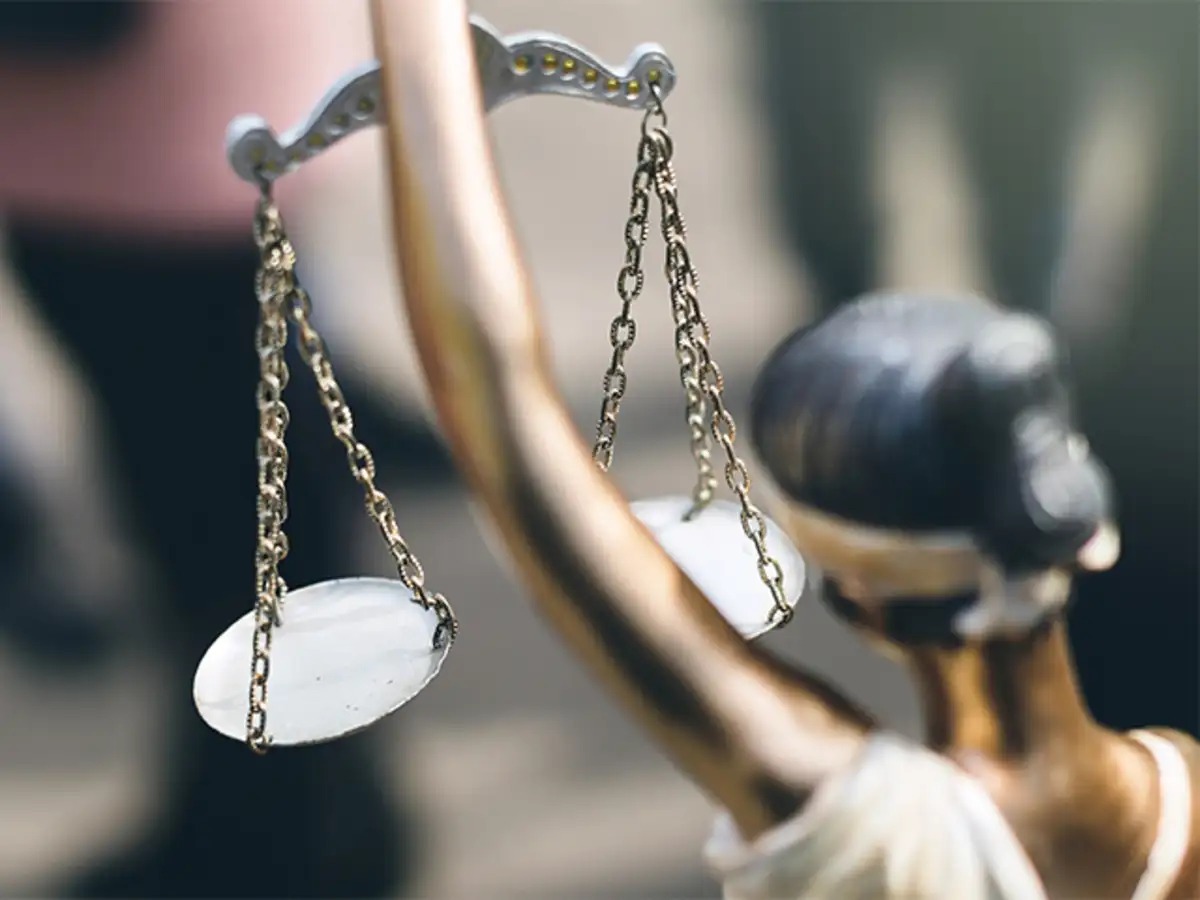The Article has been authored by our Principal Associate Farheen Penwale.
One summer evening in the national capital, burnt scraps of currency notes were found in an outhouse; blackened at the edges, scattered across the floor. Within minutes, the images became irresistible to prime time and front pages; all because the outhouse was allotted to a sitting High Court Judge.
What followed was even faster: press releases; judicial work withdrawn; orders for a transfer signed; in-house committee set up, its report sealed but then selectively leaked and within hours, a letter to the President urging removal followed by MPs scrambling for impeachment signatures. When the dust reached the Supreme Court, the challenge failed.
Every step, from the first press note to the final order, felt as if solely aimed at ensuring that the judiciary would be seen to act against one of its own. However, justice felt only seen not done.
A 1999 Rulebook for a 2025 Crisis
The in-house procedure, drafted by the Supreme Court way back in 1999, was never meant to tackle crimes. It is an internal mechanism; ad hoc, narrow, non-statutory and not final. A committee of peers gathers facts but holds no trial, no cross-examination, no lawyers.
Such a structure at the most may suffice for matters of propriety: a misplaced dinner invitation, an awkward conflict of interest, a lapse of judgment; but it collapses when the allegation smells of a crime. Burnt cash on judicial premises is not a matter of questionable etiquette. It is suspicion of a criminal offence and it demands a police investigation with the Chief Justice’s sanction; not a discreet inquiry behind chamber doors.
Sadly, the rulebooks are the vaguest where clarity is needed the most. What is a complaint? Who triggers the process if no complainant exists? Where does misconduct stop and criminality begin? The Restatement of Values of Judicial Life (1997) and the In-House Committee Procedure, both, preach ideals but show no way as to how does one practice them! Both speak of misconduct, propriety, dignity, reputation, which are fine as principles but dangerous as charges because they have no definition in the rulebooks. In this matter, was the alleged wrong a crime, an ethical lapse or mere negligence? The boundaries between the terms were blurred but the punishment was clear: no judicial work and the path to removal.
“Seen to be done” as the only goal
The Restatement begins with the line that justice must not only be done but must also be seen to be done. Ironically, in this case, only the second half prevailed. From day one, perception had set the tempo. The committee was formed quickly. Judicial work was stripped quickly. The transfer order was signed quickly. Each press note was timed to project an image of speed and decisiveness.
Speed is not fairness. The judge complained of having been given no real chance to test evidence or question witnesses. The committee was alleged to have relied on inference alone: cash found in his outhouse must mean cash belonged to him. Suspicion, not proof. A criminal court would demand certainty beyond reasonable doubt. What if tomorrow it is proved that the money was not his? Imagine if, instead of money, a corpse had been discovered. Would it not be necessary to establish whose body it was and how the death occurred? Could mere suspicion alone be enough to end a career? And once the damage is done, how can it ever be undone?
While dismissing his plea, the Apex Court’s judgment starts by noting he was “a deeply anguished judge”. Ironically, the wound was seen and acknowledged, yet the medicine withheld.
The NFRA Judgement irony: Due Process for others, denied to its author
Only weeks before the scandal, the same judge had authored a major judgment on the National Financial Reporting Authority (the audit regulator). The Court upheld NFRA’s powers but questioned its structure for fusing the roles of investigator, prosecutor and judge. It insisted on procedural safeguards, neutral adjudication and visible fairness and set aside action where neutrality seemed compromised.
In words that now echo bitterly, the judgment warned that such a system was like an appeal from Caesar to Caesar’s wife. Where careers and reputations were at stake, fairness had to be unassailable.
The same logic fits uncomfortably well here. The in-house process investigated and adjudicated within the same tent. The body that triggered the probe ratified the outcome and pressed for the harshest consequence. The very principles the NFRA judgment demanded of regulators i.e., firewalls between inquiry and decision, a process that feels fair, were denied to the judge who wrote them. Fate can be cruelly symmetrical.
The silent death penalty
Although the withdrawal of judicial work was described as temporary; in truth, it was a career death sentence. The order to do “no work” became the punishment itself, long before impeachment could even be contemplated. The process itself turned into the penalty.
Senior counsels had argued the same point in the NFRA case: that debarment of chartered accountants is quasi-criminal, a professional death penalty stripping livelihood, reputation and dignity. If such safeguards were demanded for accountants, why were they denied to a judge? If the punishment here was quasi-criminal, why were quasi-criminal protections not afforded? And if Caesar’s wife cannot be trusted to judge, how can peers be both investigators and executioners?
Trial by timelines and hashtags
In an era of instant feeds, the first image often becomes the final verdict. Burnt notes in a judge’s outhouse were enough to set both the public and lawmakers into a frenzy but the deeper danger lies in the fact that such perception itself can be manufactured. If a narrative can be built against one judge and the system responds to that noise, tomorrow’s target may be someone weaker, without a louder voice or stronger patrons. The rule of law cannot be left at the mercy of virality.
The hand of the Chief Justice
The in-house procedure places a lion’s share of discretion in the hands of the Chief Justice, making his perception decisive in setting the course of events. If so, the judge in question may not be punished for proven guilt but for failing the Chief Justice’s test of appearance and reputation at that point of time. This makes the episode less about evidence and more about perception, guided by the instincts of who so ever is at the top at that point of time, making the entire process uncertain. It is precisely this uncertainty which underlines the need for objective, transparent procedures rather than outcomes driven by personality or perception.
Inconsistency
Over the past decade, several Chief Justices have faced grave allegations: corruption, sexual harassment, administrative interference. Some removal motions failed for political reasons. Others were buried without proper inquiry. Meanwhile, when allegations touched judges lower down the hierarchy, the response was swift and public: transfers, press notes, committees announced overnight.
The point is not that this judge deserved to not be questioned but that the standards must be consistent for all. If the in-house system can act with lightning speed in one case, it must show the same rigour at every level, including at the top. Selective zeal is not integrity. It is theatre.
The Restatement’s first line and the last word
The Restatement begins by declaring that justice must not merely be done but must also be seen to be done. In this case, the seen eclipsed the done.
The question is to not discard the in-house process but question it and adapt it to values of relevance in today’s times. If allegations are criminal, there must be criminal investigations alongside internal ones, with deadlines and transparency. Those who collect facts must not be those who deliver judgment. Misconduct must be defined. Complaints must be codified. Rights of representation, including counsel, must be guaranteed. In an age where perception can be weaponised, fairness is not an ornament but the foundation of legitimacy.
This incident will be remembered for its images: burnt notes and a judge without a courtroom. What remains now are questions, not comfort. When a judge asks for justice, who ensures he receives it? If suspicion is treated as crime, why is the process not criminal? If “no work” is interim, why does it end careers? If perception is king, what prevents its misuse? If the house must be cleaned, who cleans the cleaners?
Here, justice was neither seen nor done. What unfolded was not justice but its theatre.



